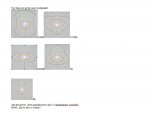Re: Need more head room, long, narrow room
Ron...
You are a minority of one on this, arguing for the sake of argument and really have nothing positive to contribute for the OP with the possible exception of requiring the rest of us to debunk your specious objections.
Welcome to the Iggy List...
Ron...
You are a minority of one on this, arguing for the sake of argument and really have nothing positive to contribute for the OP with the possible exception of requiring the rest of us to debunk your specious objections.
Welcome to the Iggy List...
Last edited:


